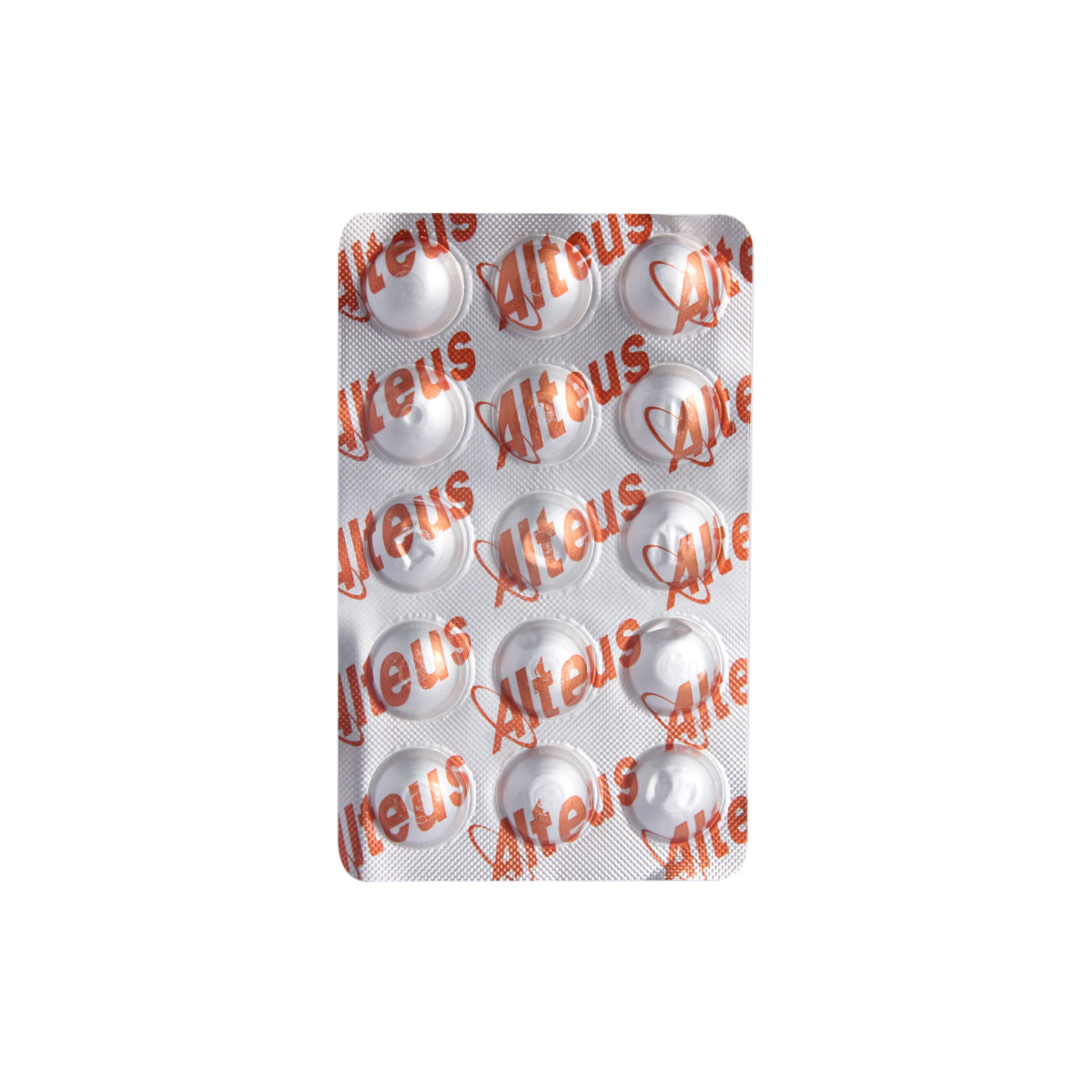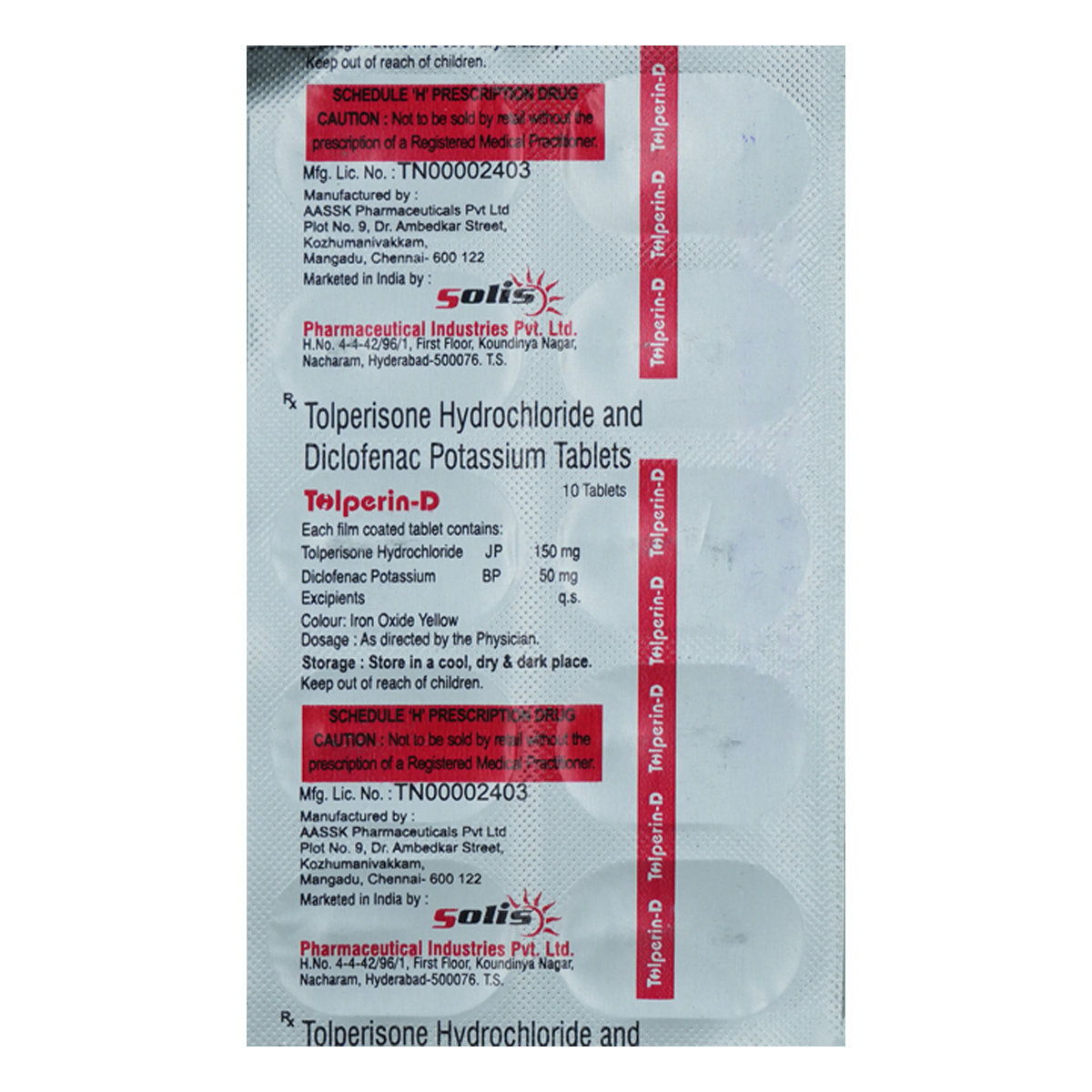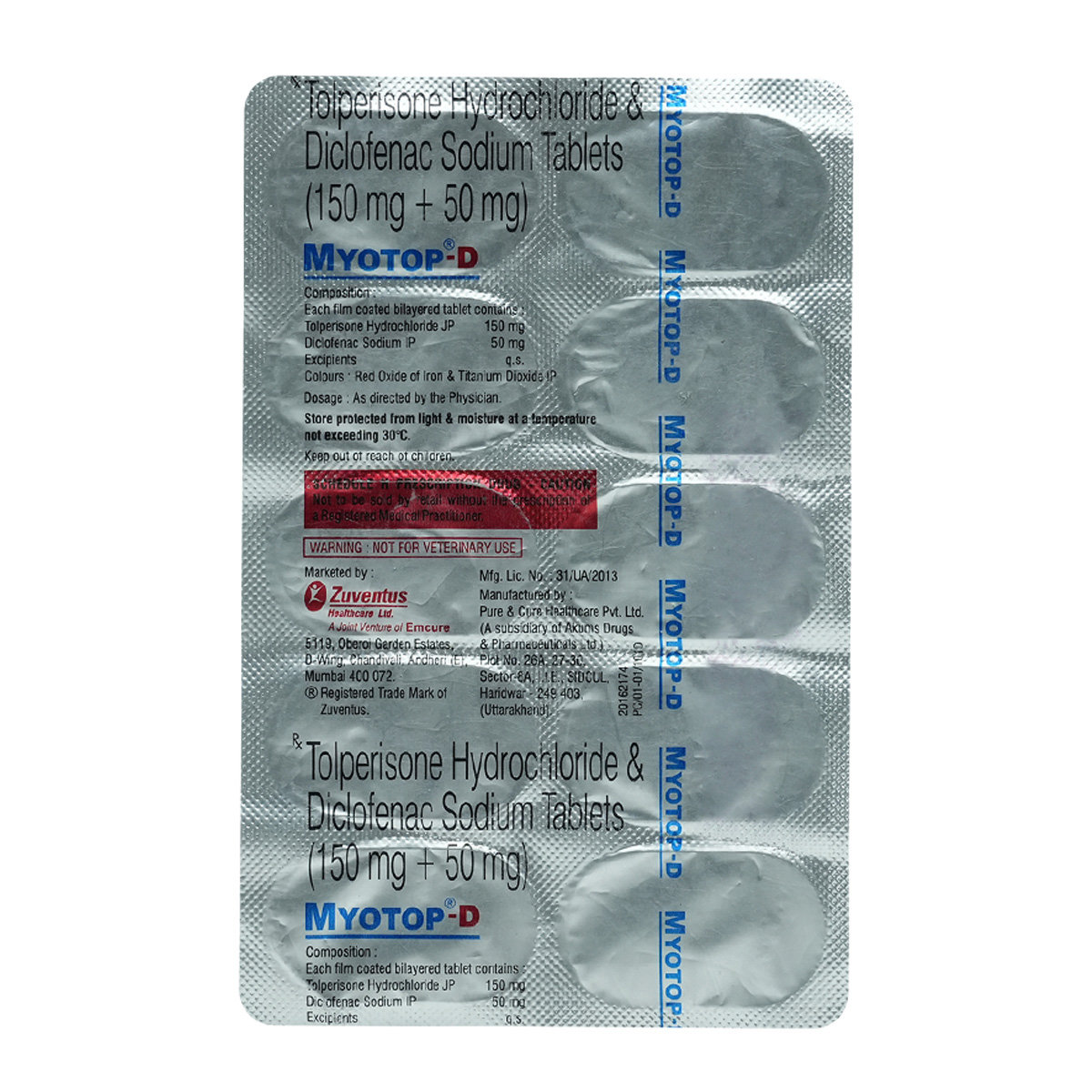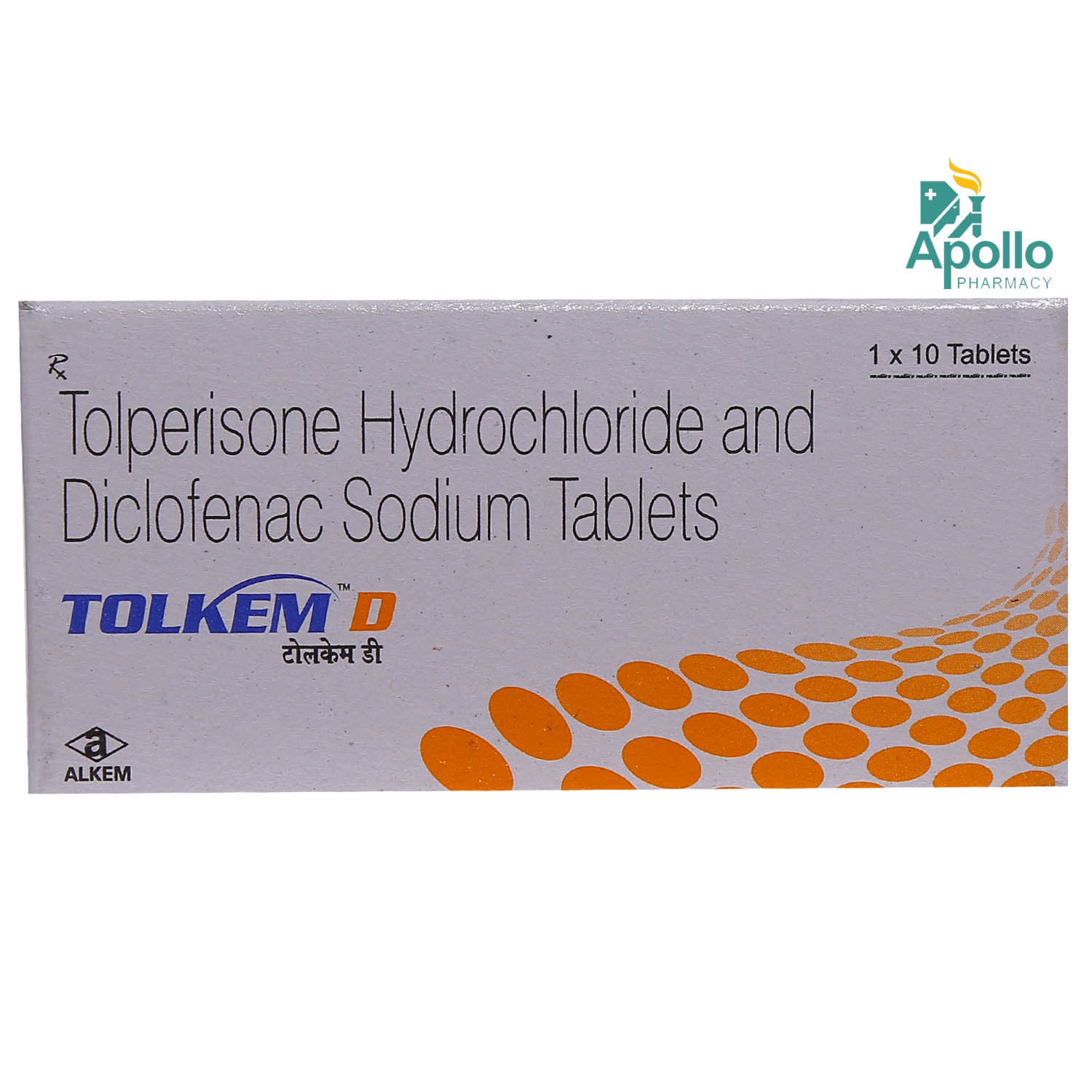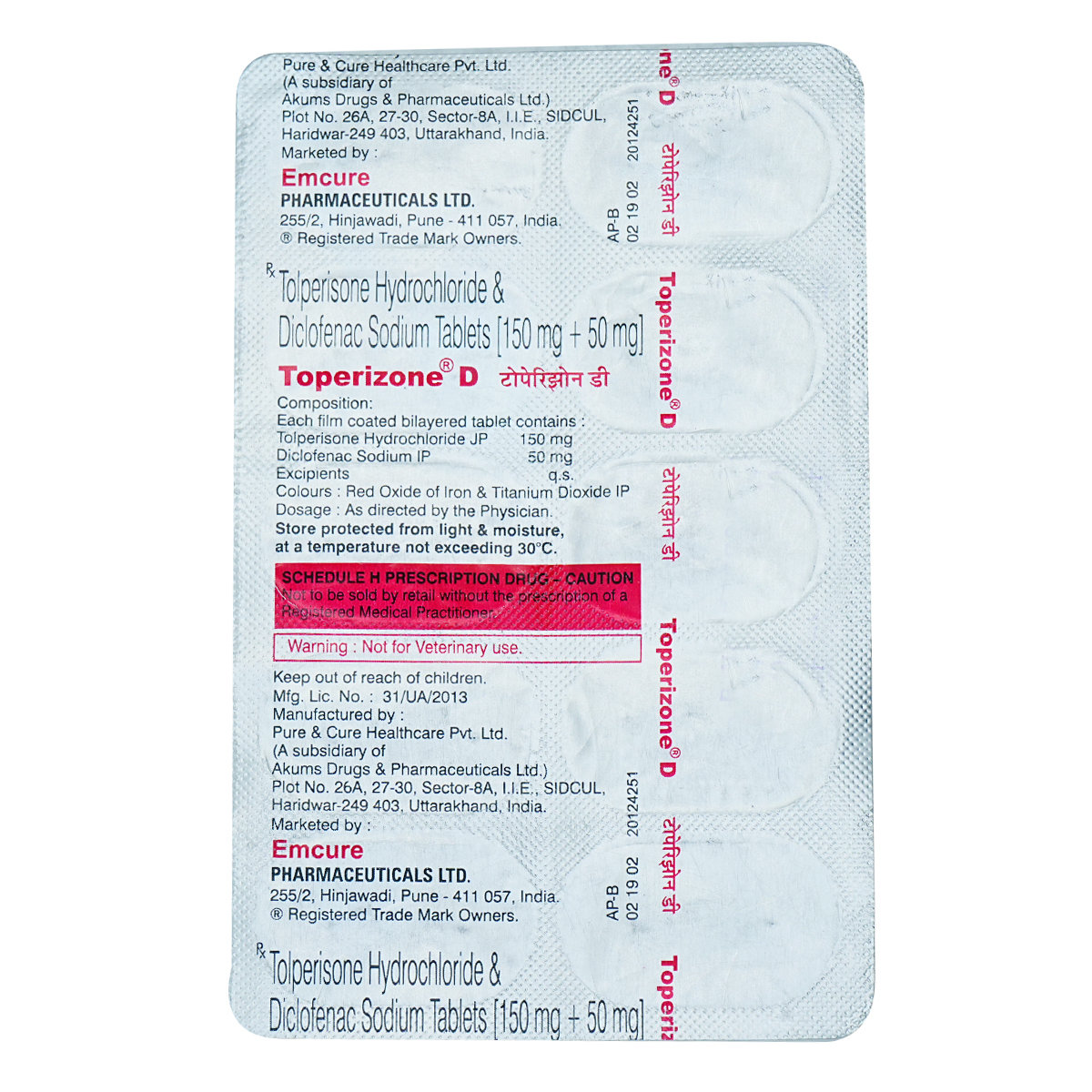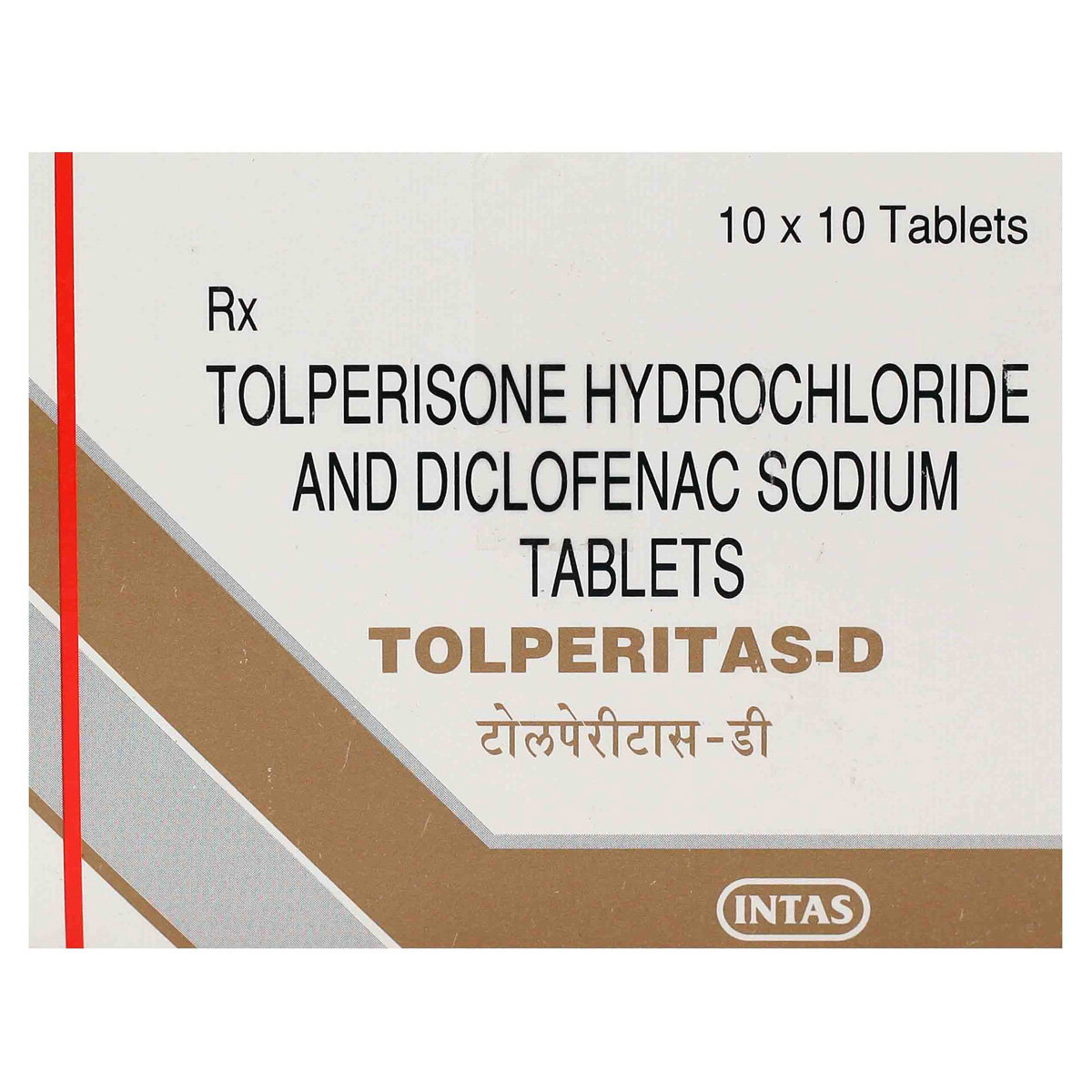Tolmist-D Tablet
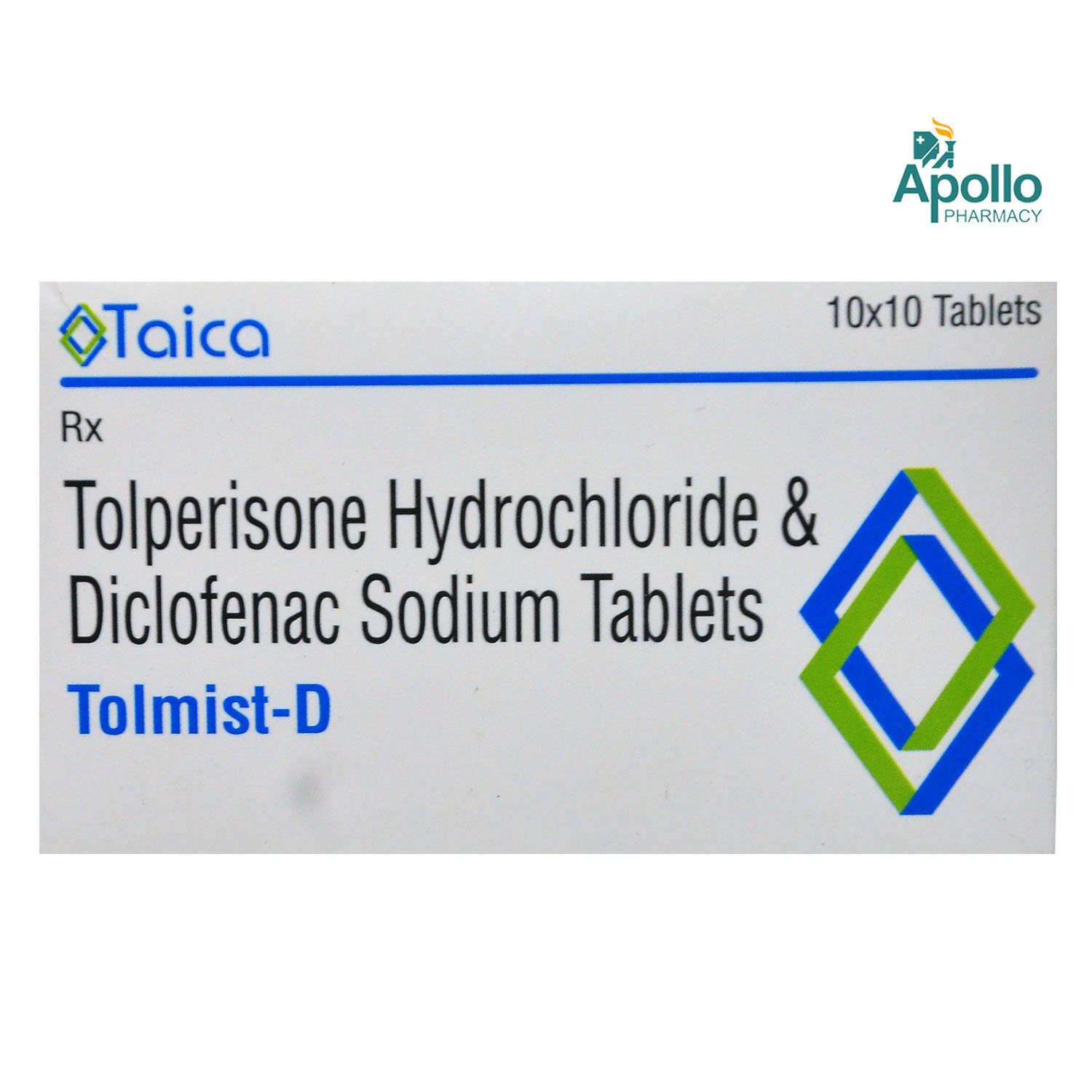
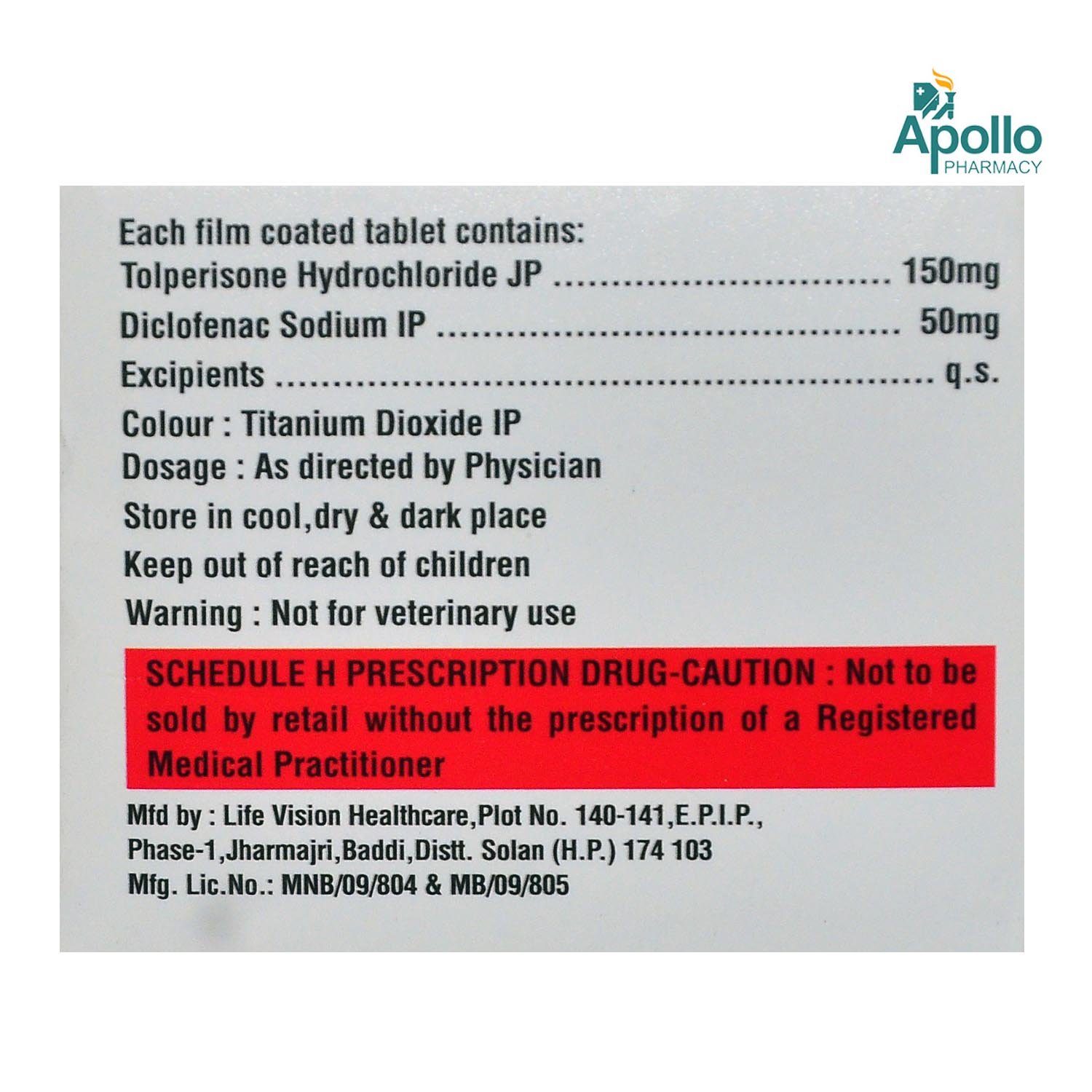
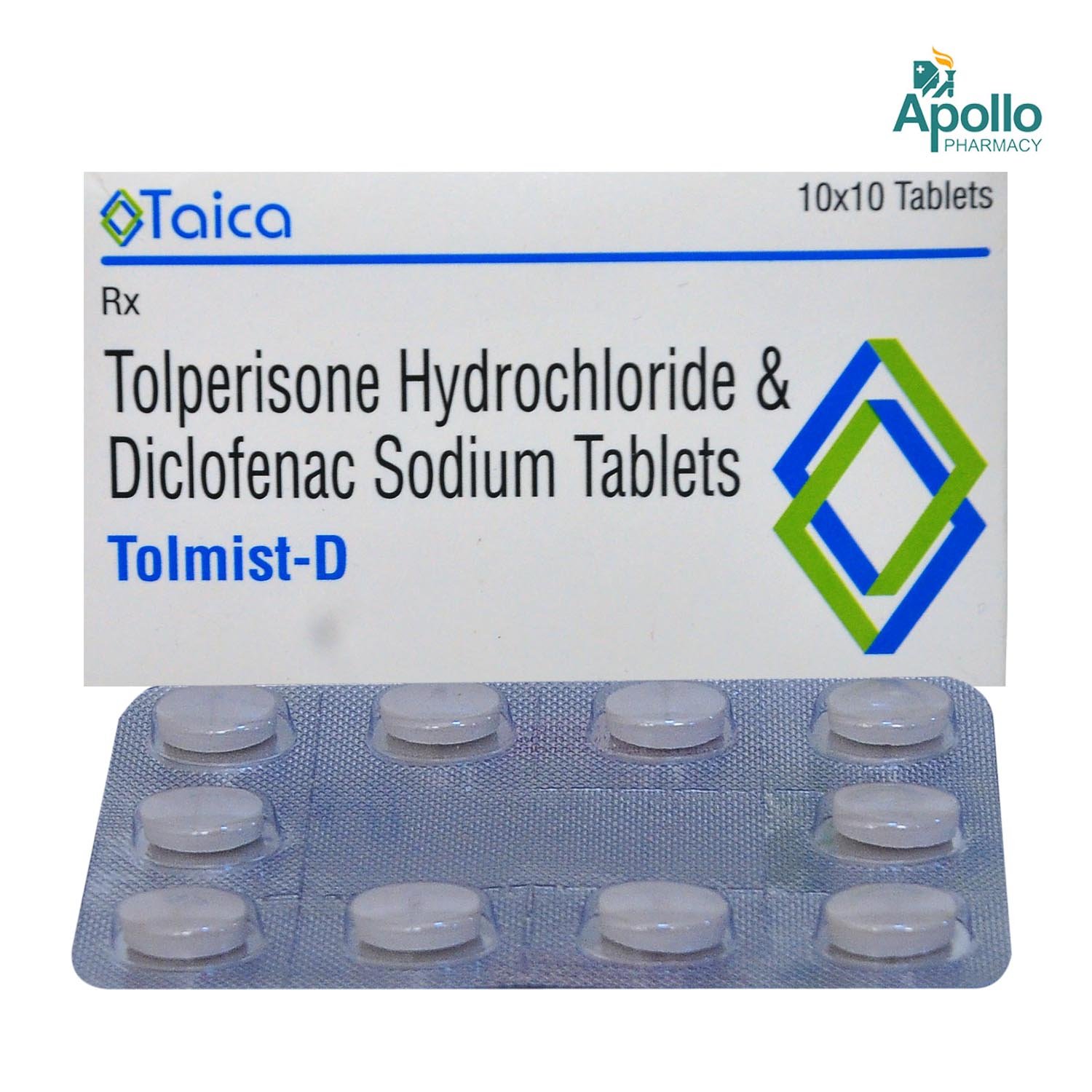

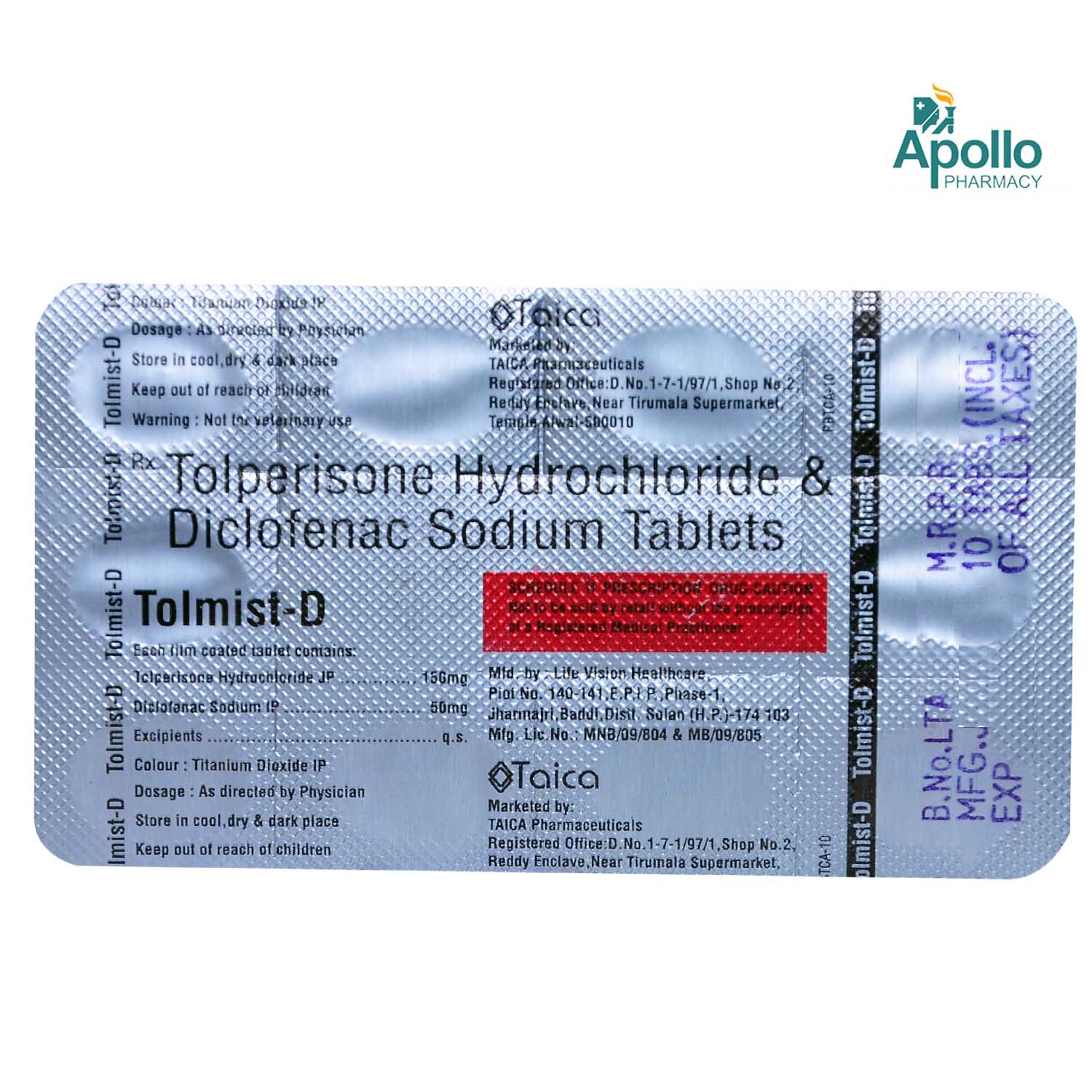
MRP ₹187.5
(Inclusive of all Taxes)
₹28.1 Cashback (15%)
know your delivery time
Provide Delivery Location
Composition :
Manufacturer/Marketer :
Consume Type :
Expires on or after :
Return Policy :

Secure Payment

Trusted by 8 Crore Indians

Genuine Products
Therapeutic Class
Country of origin
Manufacturer/Marketer address
Disclaimer
Alcohol
Safe if prescribed
Avoid consumption of alcohol while taking Tolmist-D Tablet as it may increase dizziness. It can also increase the risk of stomach bleeding.
Pregnancy
Consult your doctor
Avoid taking Tolmist-D Tablet if you are pregnant unless prescribed by a doctor. Please consult your doctor if you have any concerns regarding this, your doctor will prescribe only if the benefits outweigh the risks.
Breast Feeding
Consult your doctor
Tolmist-D Tablet must not be used during breastfeeding.
Driving
Safe if prescribed
Tolmist-D Tablet may cause sleepiness or dizziness. Do not drive or do anything needing concentration until you know how it affects you.
Liver
Consult your doctor
Those who have severe liver problems should not take this Tolmist-D Tablet because Tolmist-D Tablet contains Tolperisone, which causes the most dangerous adverse in patients with liver disease.
Kidney
Consult your doctor
Those who have severe kidney problems should not take this Tolmist-D Tablet because Tolmist-D Tablet contains Tolperisone, which causes the most dangerous adverse in patients with kidney disease.
Children
Safe if prescribed
Tolmist-D Tablet should not be given to children as the safety and effectiveness were not established.
Product Substitutes
About Tolmist-D Tablet
Tolmist-D Tablet belongs to a class of medications called Non-steroidal anti-inflammatory drugs (NSAIDs) or pain killer. Tolmist-D Tablet is used to reduce and relieve pain due to the muscle spasms (excessive tension in the muscles). Muscle spasm is the sudden involuntary contractions of the muscle, which can be painful and uncomfortable. When the nerve impulses that control the muscle movements are damaged or interrupted, it could lead to muscle spasms.
Tolmist-D Tablet is a combination of two drugs, namely: Diclofenac and Tolperisone. Diclofenac is a pain killer (NSAIDs) while Tolperisone is a skeletal muscle relaxant. Diclofenac works by blocking the effect of a chemical messenger in your body, known as cyclo-oxygenase (COX) enzymes that make another chemical 'prostaglandins' (PG). These prostaglandins are produced at injury sites and cause pain and swelling. By blocking COX enzyme's effect, lesser PGs are produced, which reduces mild to moderate pain and inflammation at the injured or damaged site. On the other hand, Tolperisone works on the brain and spinal cord centres to relieve muscle stiffness or spasm and relieve pain and improve muscle's movement.
Take Tolmist-D Tablet as prescribed by your doctor. You are advised to take Tolmist-D Tablet for as long as your doctor has prescribed it for you depending on your medical conditions. You may experience nausea, diarrhoea, vomiting, heartburn, weakness, stomach pain/epigastric pain, sleepiness, dizziness, and appetite loss. Most of these side effects of Tolmist-D Tablet do not require medical attention and gradually resolve over time. However, if the side effects are persistent, reach out to your doctor.
Tolmist-D Tablet can increase your risk of fatal heart attack or stroke. So, if you have had any recent heart surgery, do not use Tolmist-D Tablet . Tolmist-D Tablet increases the chances of stomach ulcers and bleeding. Before taking this Tolmist-D Tablet , inform your doctor if you have any allergies, myasthenia gravis (weakness in muscles), asthma, and hay fever. To treat your condition effectually, continue taking Tolmist-D Tablet for as long as your doctor has prescribed. Do not take Tolmist-D Tablet if you are pregnant or breastfeeding unless prescribed. Tolmist-D Tablet causes drowsiness and dizziness, so drive with caution. Tolmist-D Tablet should not be given to children as safety and efficacy have not been established. Avoid consuming alcohol along with Tolmist-D Tablet as it could lead to increased drowsiness and dizziness, it might also increase the risk of stomach bleeding. Keep your doctor informed about your health condition and medicines to rule out any side-effects.
Uses of Tolmist-D Tablet
Medicinal Benefits Mweb
Key Benefits
Tolmist-D Tablet belongs to a class of medications called Non-steroidal anti-inflammatory drugs (NSAIDs) or pain killers. Tolmist-D Tablet is a combination of two drugs, namely: Diclofenac and Tolperisone. Diclofenac is a pain killer (NSAIDs) while Tolperisone is a skeletal muscle relaxant. Diclofenac works by blocking the effect of a chemical messenger in your body, known as cyclo-oxygenase (COX) enzymes that make another chemical 'prostaglandins' (PG). These prostaglandins are produced at injury sites and cause pain and swelling. By blocking COX enzyme's effects, lesser PGs are produced, which reduces mild to moderate pain and inflammation at the injured or damaged site. On the other hand, Tolperisone works on the brain and spinal cord centres to relieve muscle stiffness or spasm and relieve pain and improve muscle's movement. Altogether Tolmist-D Tablet relieves pain and relaxes the muscles.
Directions for Use
Side Effects of Tolmist-D Tablet
- Nausea
- Diarrhoea
- Vomiting
- Loss of appetite
- Heartburn
- Weakness
- Stomach pain/epigastric pain
- Sleepiness
- Dizziness
- Numbness and tingling
- Ringing in the ears
Drug Warnings
Tolmist-D Tablet can increase your risk of fatal heart attack or stroke. So, if you have had any recent heart surgery, do not use Tolmist-D Tablet . Do not take Tolmist-D Tablet if you are allergic to Tolmist-D Tablet , have severe heart failure, have suffered bleeding problems such as bleeding from stomach or bowels while taking any pain killers or you have liver or kidney problems. Inform your doctor before taking Tolmist-D Tablet if you have or had high blood pressure, heart problems, high cholesterol, diabetes, asthma, liver and kidney problems. Do not take Tolmist-D Tablet if you are pregnant or breastfeeding unless prescribed. Tolmist-D Tablet causes drowsiness and dizziness, so drive only if you are alert. Tolmist-D Tablet should not be given to children as the safety have not been established. Avoid consuming alcohol and Tolmist-D Tablet as it could lead to increased drowsiness and increase the risk of stomach bleeding. Stop taking Tolmist-D Tablet and consult your doctor immediately if you have stomach pain or any signs of bleeding in intestine or stomach such as blood in stools. Do not take any other NSAID's for pain relief along with Tolmist-D Tablet unless prescribed. Keep your doctor informed about your health condition and medicines to rule out any side-effects.
Drug-Drug Interactions Checker List
- ALLOPURINOL
- ASPIRIN
- CYCLOSPORINE
- FUROSEMIDE
- METHOTREXATE
Habit Forming
Special Advise
- Applying ice pack to the affected area may help in relieving pain and inflammation.
- Avoid grapefruit juice.
Diet & Lifestyle Advise
- Exercising regularly helps in muscle stretching so that they are less likely to spasm, tear and sprain. Mild exercises such as jogging and walking are helpful for muscle stretching.
- Massages can also be helpful.
- Avoid freezing and hot temperatures.
- Avoid wearing tight-fitting clothes, instead, wear loose garments.
- Rest well, get plenty of sleep.
- To avoid developing pressure sores, change your position at least every two hours.
- Hot or cold therapy can help treat muscle spasms. Apply an ice-pack or hot-pack on the muscle for 15-20minutes.
- Stay hydrated, drink plenty of water.
All Substitutes & Brand Comparisons
RX
Myocom D Tablet 15's
Alteus Biogenics Pvt Ltd
₹168
(₹10.09 per unit)
40% CHEAPERRX
Telpimeg-D Tablet 15's
Megma Healthcare Pvt Ltd
₹190
(₹11.4 per unit)
32% CHEAPERRX
Tolperin-D Tablet 10's
Solis Pharmaceuticals
₹131
(₹11.79 per unit)
30% CHEAPER
Buy best C.n.s Drugs products by
Intas Pharmaceuticals Ltd
Sun Pharmaceutical Industries Ltd
Torrent Pharmaceuticals Ltd
Alkem Laboratories Ltd
Abbott India Ltd
Cipla Ltd
Alteus Biogenics Pvt Ltd
Micro Labs Ltd
Lupin Ltd
Ipca Laboratories Ltd
D D Pharmaceuticals Pvt Ltd
Icon Life Sciences
Mankind Pharma Pvt Ltd
Tripada Healthcare Pvt Ltd
Arinna Lifesciences Ltd
Linux Laboratories Pvt Ltd
East West Pharma India Pvt Ltd
La Renon Healthcare Pvt Ltd
Talent India Pvt Ltd
Tas Med India Pvt Ltd
Zydus Healthcare Ltd
Cnx Health Care Pvt Ltd
Eris Life Sciences Ltd
Leeford Healthcare Ltd
Emcure Pharmaceuticals Ltd
Macleods Pharmaceuticals Ltd
Sigmund Promedica
Aristo Pharmaceuticals Pvt Ltd
Dr Reddy's Laboratories Ltd
Troikaa Pharmaceuticals Ltd
Consern Pharma Ltd
Zydus Cadila
Shine Pharmaceuticals Ltd
Wockhardt Ltd
Ardent Life Sciences Pvt Ltd
Crescent Formulations Pvt Ltd
Theo Pharma Pvt Ltd
Reliance Formulation Pvt Ltd
Ikon Pharmaceuticals Pvt Ltd
Propel Healthcare
Neon Laboratories Ltd
Jagsam Pharma
Msn Laboratories Pvt Ltd
Morepen Laboratories Ltd
Pulse Pharmaceuticals
Sanofi India Ltd
Med Manor Organics Pvt Ltd
Hetero Healthcare Pvt Ltd
Novartis India Ltd
Crescent Therapeutics Ltd
Elder Pharmaceuticals Ltd
Solvate Laboratories Pvt Ltd
Akumentis Healthcare Ltd
Mova Pharmaceutical Pvt Ltd
Psyco Remedies Ltd
Tripada Lifecare Pvt Ltd
Ajanta Pharma Ltd
Cyrus Remedies Pvt Ltd
Medishri Healthcare Pvt Ltd
Cadila Healthcare Ltd
Glenmark Pharmaceuticals Ltd
Matteo Health Care Pvt Ltd
Hbc Life Sciences Pvt Ltd
Lyf Healthcare
Matias Healthcare Pvt Ltd
Mesmer Pharmaceuticals
Alembic Pharmaceuticals Ltd
Capital Pharma
Crescent Pharmaceuticals
Medopharm Pvt Ltd
Alniche Life Sciences Pvt Ltd
Kivi Labs Ltd
Talin Remedies Pvt Ltd
USV Pvt Ltd
Quince Lifesciences Pvt Ltd
Solis Pharmaceuticals
Infivis Life Care
Zuventus Healthcare Ltd
Cadila Pharmaceuticals Ltd
Pfizer Ltd
Wallace Pharmaceuticals Pvt Ltd
A N Pharmacia Laboratories Pvt Ltd
Blue Cross Laboratories Pvt Ltd
Jenburkt Pharmaceuticals Ltd
Lia Life Sciences Pvt Ltd
Mano Pharma
Medley Pharmaceuticals Ltd
Primus Remedies Pvt Ltd
FDC Ltd
Maneesh Pharmaceuticals Ltd
Apex Laboratories Pvt Ltd
Gagnant Healthcare Pvt Ltd
Ozone Pharmaceuticals Ltd
RPG Life Sciences Ltd
Strides Shasun Ltd
Unichem International
GlaxoSmithKline Pharmaceuticals Ltd
Kuresys Labs Pvt Ltd
LA Pharma
Trion Pharma India Llp

